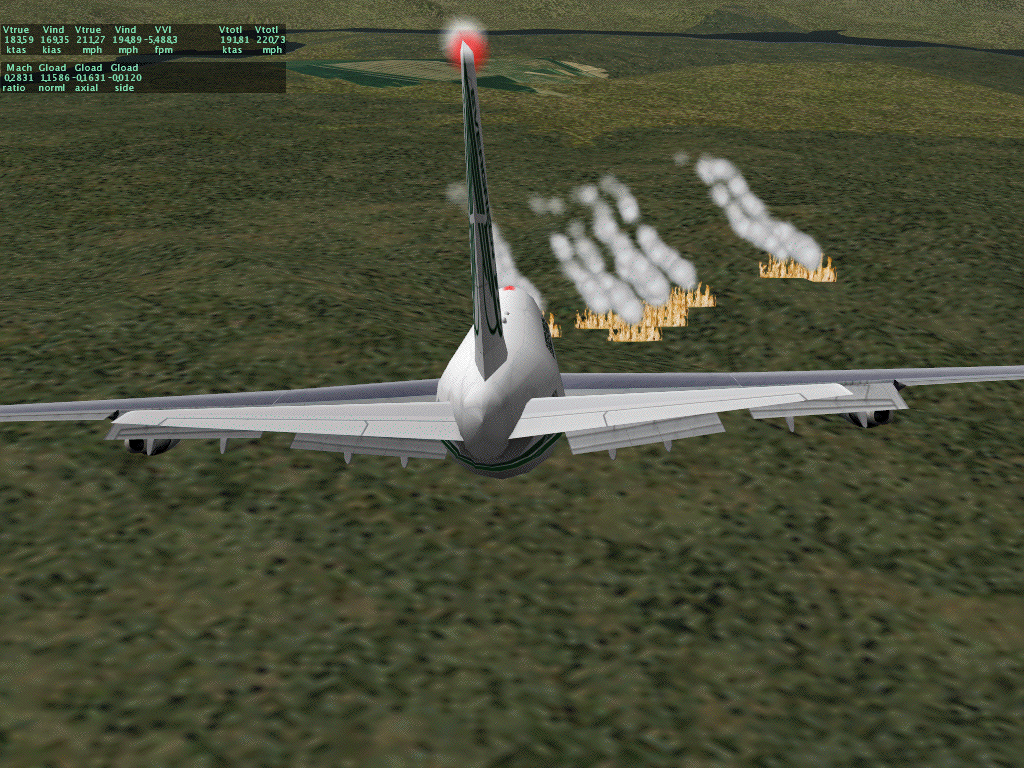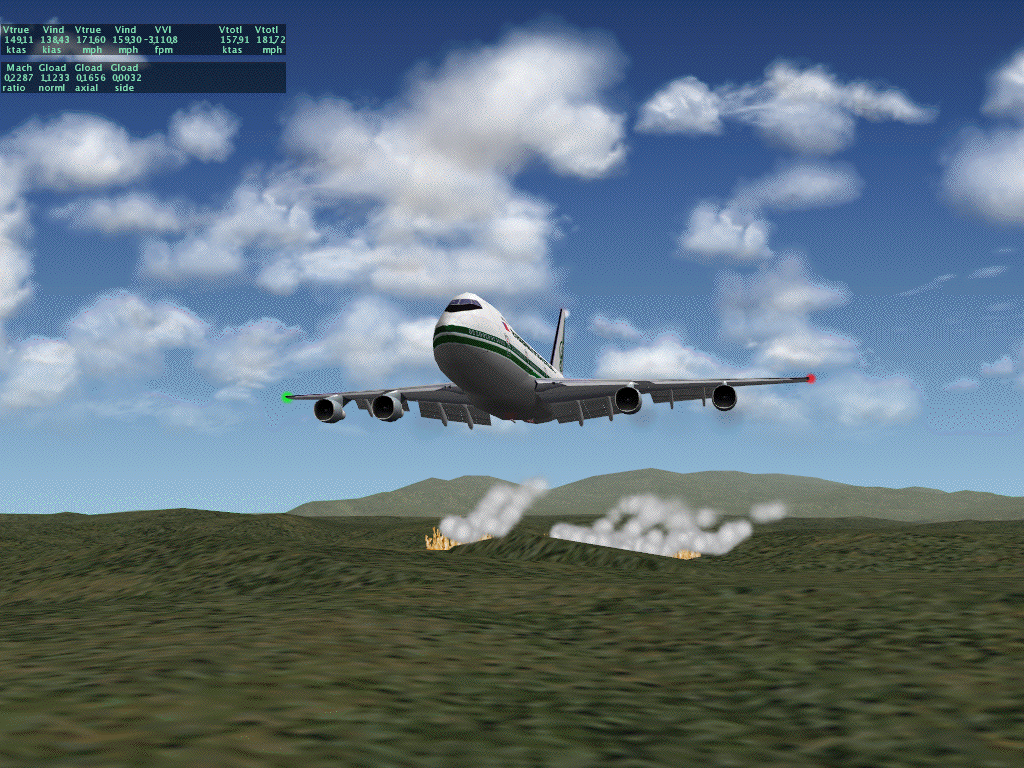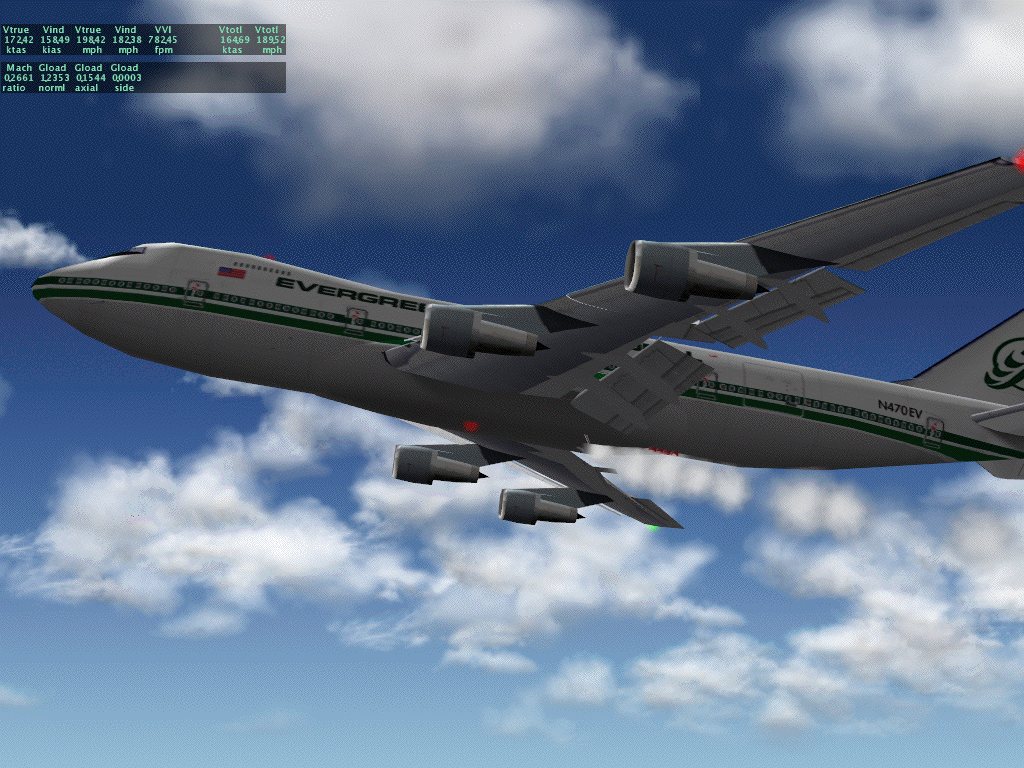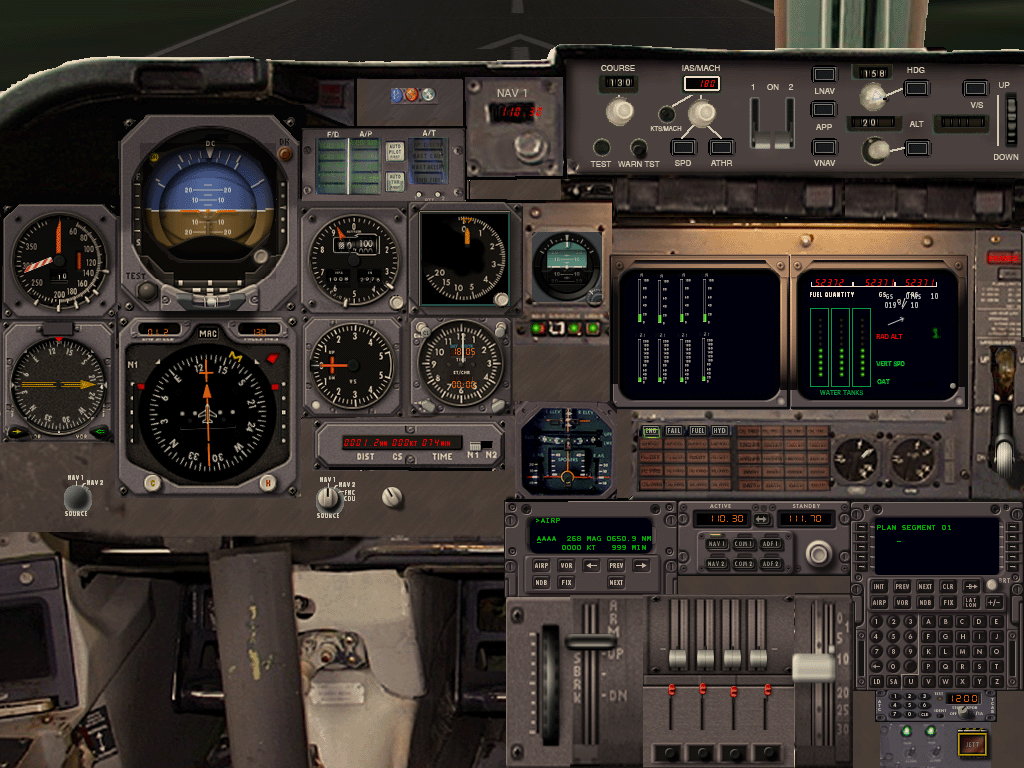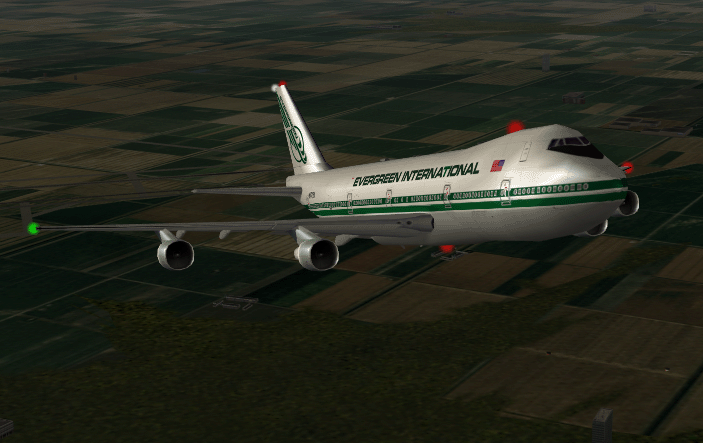Features
How much fun can you have with a 747? Those clever (and very lucky) people at Evergreen International have come up with a new way. They turned it into a water bomber, capable of delivering up to 24,000 gallons through four nozzles under pressure (so it doesn’t rely on gravity). This is about 7 times more than a P3. I made this from the very nice 747-123SCA by Reuben Horsley. I added the nozzles and changed some little details as well as the airfoils so that the supertanker will fly well at 140 kts and 400 feet (with full flaps) just like the real thing. To see the real thing in action go to the Evergreen website (which includes videos of drops):
http://www.evergreenaviation.com/supertanker/cpb.html
The autopilot is remarkably responsive (set ATTR, HDG and V/S) and flying low level at 140 kts you will still get 3 up if needed (this is with full water, 6 hours of fuel, 20,000 lb payload for an all up weight of 606,000 lbs). Stall speed under these conditions is 126 kts. This is still higher than it should be. Any ideas?
CREDITS
This Boeing 747-200B X-Plane made by Gary J. Hunter.
It was based on the 747-123 by Reuben Horsley, itself developed from a 747 by Mohammad Gazzawi & Sergio Santagada .
The panel came partly from the 747SP and is based on the work of Mitsuru Ishikawa.
I changed the acf file a little to place the outboard engines more accurately, aileron 1 and flap chord ratios, and adjusted the flap CL and airfoil sections to try to get this plane to fly well at 140 kts.
Brief History
The following is taken from the Evergreen website.
WHY A SUPERTANKER?
The Problem:
For decades the United States government has relied on aviation resources, primarily in support of ground forces, to combat large fires. But as the severity of the fire seasons have increased, so have the problems associated with the aging aircraft fleet.
Historically, just how severe is the wildfire problem? Since 1990, according to the National Interagency Fire Center (NIFC), 60,594,824 acres have burned in the United States. This huge area is equal to the entire state of Oregon, the nation’s 10th largest state, being destroyed by fire.
These fires have cost an extraordinary amount of money to combat. According to NIFC, which has compiled firefighting costs since 1994, over $6.9 billion was spent to suppress these fires. But the true cost of wildfire is much higher. These costs do not factor in cumulative wildfire costs, which include timber, tourism and property losses. If you factor in these costs, in 2002 alone, a year in which over 88,000 fires burned nearly 7 million acres, cumulative wildfire costs amounted to nearly $10 billion.
The Solution:
Evergreen International Aviation realizes new aerial firefighting challenges call for a new and improved aircraft. In response to this urgent problem, Evergreen International Aviation has combined its years of aerial firefighting expertise with its experience as an owner/operator of Boeing 747 aircraft to develop the nation’s next generation firefighting and aerial application platform—the Evergreen Supertanker.
The Evergreen Supertanker’s drop capabilities, effectiveness, safety standards and operational flexibility are revolutionary. With guidance from appropriate agencies, Evergreen will assist state, federal and worldwide experts redefine how fires are fought and emergency management missions are performed.
This aircraft is being built using scientific data and study with an emphasis on safety and effectiveness. To date, over 50 degreed engineers/scientists have invested an estimated 20,000 hours on this project.
Evergreen is not just developing a new aircraft. Instead, we have designed and will deploy the first true turnkey emergency response program capable of supporting a vast range of urgent missions worldwide.
CAPABILITY IMPROVEMENTS
The Supertanker offers many dramatic efficiency improvements related to drop capability, mission diversity and response time. And, when it comes to costs, the Evergreen Supertanker will put out fires in less time, require fewer aircraft, flight missions and hours flown.
Increased Tank Space
Compared to the existing aerial firefighting fleet, the Evergreen Supertanker will offer at least seven times more drop capability over today’s largest airtanker. This large gallonage increase gives the Supertanker an opportunity to save a substantial amount of time and money fighting fire.

Advanced Drop Capability
The Supertanker’s significant loiter time will allow it to place a single large drop or various segmented drops at multiple intervals while in flight. This allows the aircraft to fight multiple fires on a single mission. And, depending on the mission's requirements, the Supertanker’s versatile application system will disperse retardant under high pressure, for an overwhelming response, or drop retardant equivalent to the speed of falling rain.
An aircraft this size will also provide a suitable platform for advanced GPS navigation and forward looking infrared (FLIR) capabilities. These tools could enhance navigation, possibly leading to night operations, and help the flightcrew identify specific drop zone locations.
Response Time
The aircraft will be fully loaded and on alert status 24 hours a day, 7 days a week. The Supertanker will be able to cruise at Mach .86 or close to 600 mph, getting to a fire much sooner than existing aircraft and well within the aircraft’s design limitations. Current air tankers, when fully loaded, are at their maximum design limitations which inhibit aircraft performance and maneuverability. In addition, a greater power to weight ratio provided by a Supertanker will enhance aircraft performance in all phases of flight.
